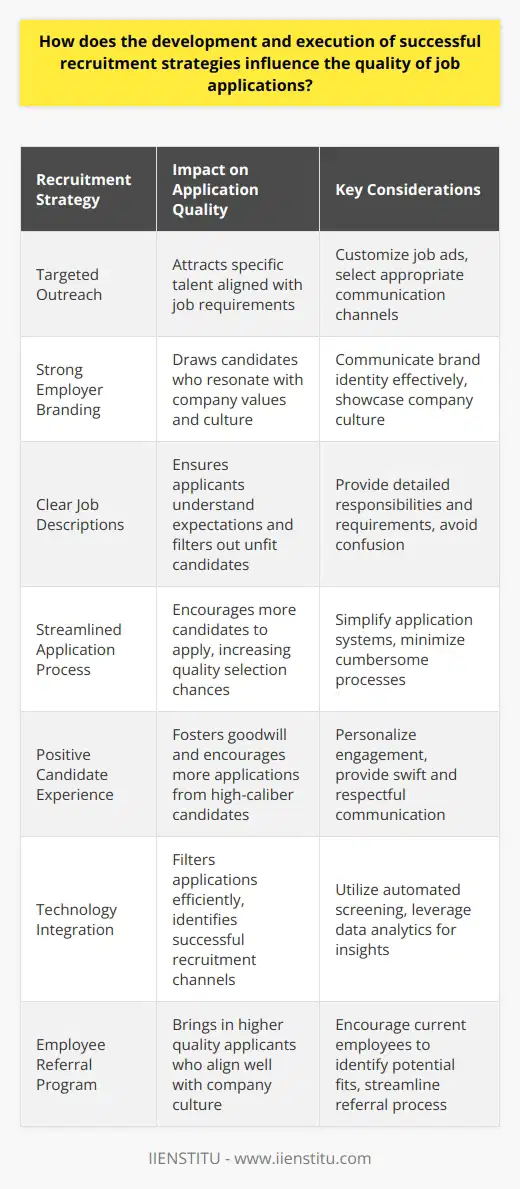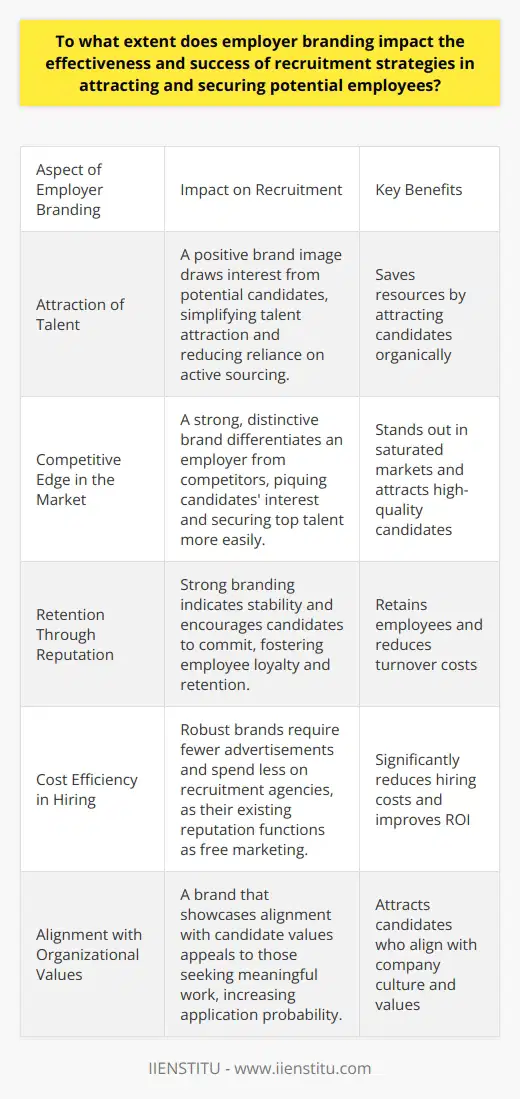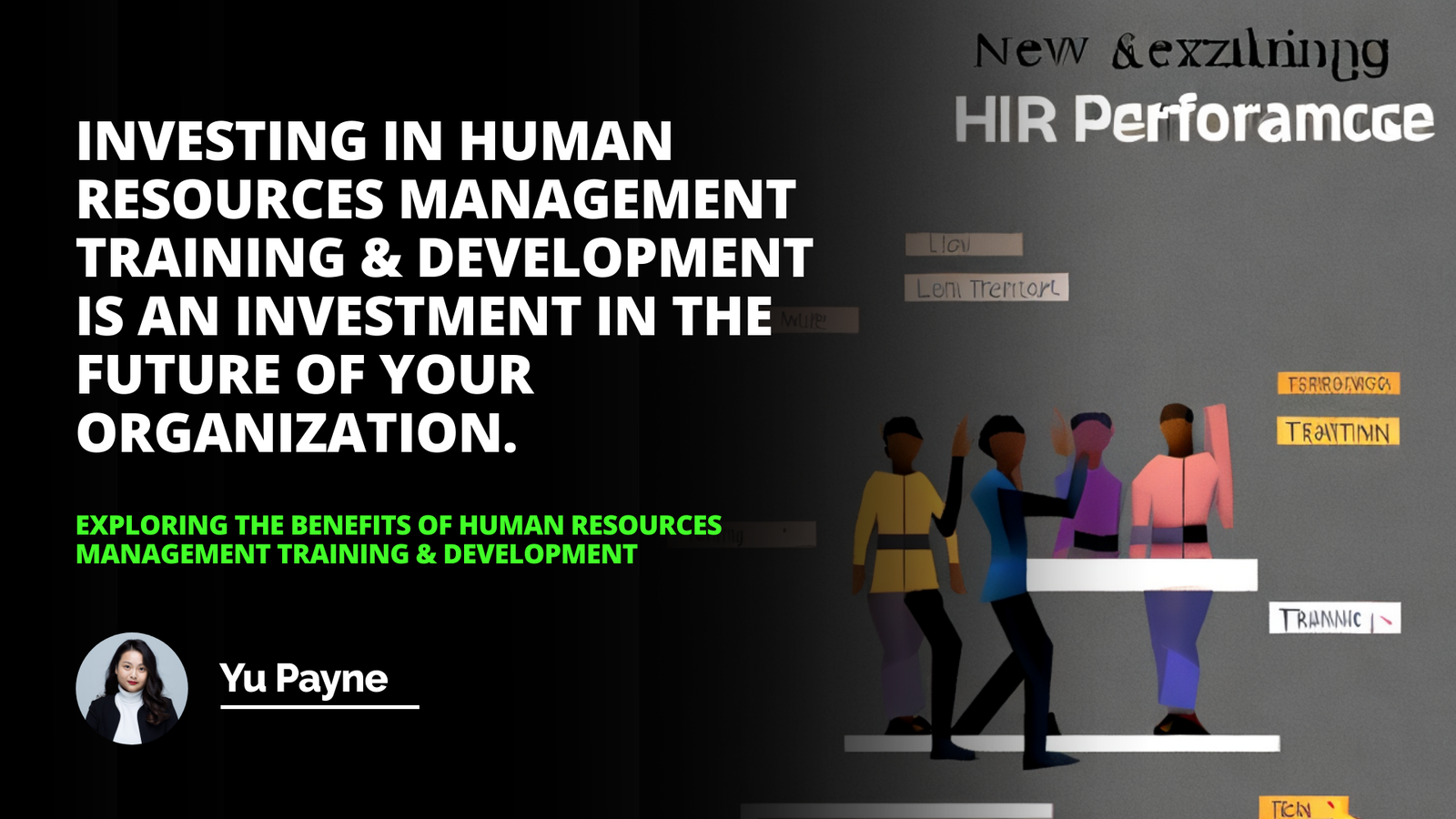
The journey to finding and securing the right job is fraught with numerous decisions, each with significant implications for one’s career trajectory. In this intricate process, few moments are as pivotal as the receipt of a job offer. This blog post aims to illuminate the various facets of job offers, providing key insights into not only understanding and evaluating them but also the steps for accepting or declining them with professionalism and tact.
From parsing the details of a hr certification course to examining the nuances of online courses, we consider all angles to ensure that both employers and prospective employees can navigate the recruitment process successfully.
Understanding Job Offers
Definition of a job offer
A job offer stands as an employer's formal proposal of employment to a candidate following a successful interview process. This proposal often comes in written form and should encompass key details that address more than the mere aspects of the position. It serves as the preliminary agreement to which both parties—the employer and the prospective employee—will be beholden.
Inclusions in a job offer: Within a job offer, one can expect to find a comprehensive explanation of the offered salary, which should be aligned with industry standards and suitable for the role’s level of seniority. Furthermore, a detailed job description or role outline is customary, supplying the candidate with a clear picture of their expected responsibilities and tasks. Often included also are outlines of the benefits package, which may range from health insurance to retirement plans, and other job-specific perks.
Example of a job offer: For example, a job offer for a senior marketing position might include not only the base salary but also performance bonuses, stock options, and information regarding allowances for continuous professional development such as attending a hr certification course.
Types of job offers
Conditional Job Offer: A conditional job offer typically hinges on the candidate fulfilling certain conditions or prerequisites such as completing a medical examination or passing a background check. They provide a safety net for employers, ensuring that their chosen candidate meets all corporate and legal requirements before fully committing to their employment.
Unconditional Job Offer: Conversely, an unconditional job offer is an outright offer of employment, with no strings attached. It is extended once all the necessary preconditions have been satisfied, signaling the end of the recruitment process and marking the beginning of the employment relationship.
The legality of a job offer
It must abide by employment laws: All job offers must conform strictly to employment laws to safeguard both the employer and employee from future legal disputes. This adherence to the rule of law ensures that all interactions are conducted within the boundaries of fair practice and equal opportunity.
It should not discriminate against any protected classes: Moreover, job offers must be free from discrimination and bias, particularly with regards to protected classes as defined by law. This principled stance upholds the values of diversity and inclusion within the workplace and society at large.
Factors to Consider When Receiving a Job Offer
Remuneration Package
Explanation of what constitutes a good remuneration package: Upon receiving a job offer, it is critical to thoroughly assess the remuneration package on the table. A comprehensive package is one that competes favorably within the market and aligns with the prospective employee's experience and qualifications. It should also account for cost-of-living factors and provide a balance between immediate earnings and long-term financial health, through retirement plans and potential bonuses or stock options.
Importance of negotiation: Negotiation is a pivotal aspect of the job offer process and should always be approached with thorough preparation and confidence. When discussing compensation, candidates should feel empowered to negotiate terms that reflect their worth and to seek clarity on any elements of the package that may be ambiguous or uncertain.
Example of a negotiation scenario: For instance, a candidate receiving an offer for a project management role might use their certification from an esteemed online courses provider to justify a higher starting salary or request additional professional development opportunities within their remuneration package.
Work Environment
How to assess a good work environment: Beyond the financial aspects of a job offer, the work environment warrants careful consideration. Prospective employees should gather as much information as possible on the company's culture, values, and the dynamic within the team they will be joining.
Importance of company culture: A supportive and positive company culture can greatly enhance job satisfaction and employee well-being, making it a critical factor in the decision-making process. Compatibility with company culture is often a bellwether for long-term success and fulfillment within a role.
Example of evaluating a company's culture: Evaluating a company’s culture could involve speaking with current and former employees, researching the company's public image and values, and reflecting upon the impressions gathered during the interview process.
Advancement Opportunities
Explanation on why advancement opportunities matter: Advancement opportunities are an essential consideration when evaluating a job offer. The potential for growth and career development can impact one’s professional journey profoundly, translating into increased job satisfaction, higher earning capacity, and the attainment of personal career goals.
How to determine if there will be opportunities for growth: Scrutinizing a company's promotion policies, ongoing training opportunities—such as funding or time off for online courses—and observing the career trajectories of current employees can provide insights into one's potential for advancement.
Example of scenario on weighing advancement opportunities: When approached with a job offer, a candidate should inquire about how former incumbents of the role have progressed within the company. For example, if those employees have advanced to higher levels of responsibility or transitioned to other departments successfully, it would suggest that the company endorses employee growth.
How to Accept a Job Offer
Things to do before accepting a job offer
Confirming details: Before accepting a job offer, it is vital to confirm all the details within the offer—are the salary and benefits clearly stated, and do they concur with the discussion during the negotiation stage? Ensuring accuracy in these details avoids future misunderstandings or disappointments.
Seeking expert advice: It can also be prudent to seek counsel from mentors, industry peers, or legal advisors, especially when dealing with complex elements of the contract. This level of due diligence can help a prospective employee fully understand the terms and conditions they are agreeing to.
Reviewing contract thoroughly: Meticulous review of the job contract is essential, as it legally binds the employee to the company. Attention to detail will help to identify any clauses that could be problematic, such as non-compete clauses or intellectual property agreements.
Writing a job acceptance letter
Details to include: When composing a job acceptance letter, the candidate should confirm the position, start date, salary, and any other fundamental terms of employment. The letter serves as an official record of acceptance and a reiteration of the key employment terms.
How to display professionalism and express gratitude: A job acceptance letter should be crafted with professionalism. It should also express gratitude for the opportunity, reflect enthusiasm for the position, and convey eagerness to contribute to the team and organization.
Example of a well-written job acceptance letter: An example of an effective job acceptance letter would include a gracious acknowledgment of the opportunity provided and a reiteration of the offer details, as well as signaling a commitment to adding value to the company.
How to Decline a Job Offer
Things to consider before declining a job offer
Job compatibility: Before turning down a job offer, the candidate needs to consider the reasons behind their decision—is the job not in alignment with their career goals, or are there certain deal-breakers that cannot be reconciled?
Better job offers: Declining may also be a strategic decision if the candidate has received multiple job offers and needs to select the one that best suits their long-term objectives and interests.
Personal reasons: Personal reasons, such as life changes or reassessed career plans, can also play a pivotal role in the decision to reject a job offer. Regardless of the cause, the decline should be handled with delicacy and professionalism.
Writing a job rejection letter
How to do it politely and professionally: Informing the company of the decision to decline their offer should be done with tact and courtesy. A professional rejection letter helps to maintain a positive relationship with the potential employer for future possibilities.
Maintaining a good relationship with the employer: The letter should convey a sincere appreciation for the offer and a brief explanation of the decision, omitting unnecessary details that could be construed as negative or critical.
Example of a successful job rejection letter: A successful job rejection letter might include a statement of gratitude, an indication of the thoughtful consideration given to the offer, and well wishes for the company's continued success—a gesture that leaves the door open for future opportunities.
Conclusion
Summary of the key points covered in the blog post
In culmination, we have delved into the intricacies of understanding, evaluating, and responding to job offers. The detailed insights provided should aid both employers and candidates in navigating job offers with a strategic and informed approach.
Restatement of the importance of making informed decisions when it comes to job offers
Making informed decisions concerning job offers is crucial for ensuring alignment with one's career path and personal aspirations. These decisions can dramatically impact an individual's professional future and quality of life.
Encouragement for readers to seek advice when necessary
Lastly, both prospective employees and employers are encouraged to seek expert advice, be it through mentors, industry peers, or relevant online courses, whenever necessary. This guidance can prove invaluable in making decisions that are both prudent and propitious.
Frequently Asked Questions
What are the key components of a competitive job offer that can attract top-notch talent?
Understanding Competitive Job Offers
A competitive job offer stands out. It attracts exceptional talent. Employers must know what matters. Here, key components emerge. We dissect those attracting top-notch candidates.
Compensation Matters
Financial incentives remain crucial.
- Competitive salaries are fundamental.
- Bonuses reflect performance and achievement.
- Stock options convey long-term stakes.
- Profit-sharing plans involve employees in success.
Benefits Make the Difference
Robust benefits packages are essential.
- Health insurance supports employee well-being.
- Retirement plans ensure future security.
- Paid time off promotes work-life balance.
- Career development opportunities foster professional growth.
Flexibility Is King
Work-life balance takes precedence today.
- Flexible schedules accommodate personal needs.
- Remote work options increase appeal.
- Unlimited vacation policies demonstrate trust.
Purpose and Values
Alignment with company mission is imperative.
- Transparency in practices builds trust.
- Commitment to diversity enhances culture.
- Social responsibility initiatives show character.
Career Growth Opportunities
Professional development is non-negotiable.
- Clear pathways to advancement motivate.
- Continuous learning environments are attractive.
- Mentoring programs provide guidance and support.
Company Culture and Perks
Culture can tip the scales.
- Office ambiance reflects company values.
- Extra amenities offer daily enjoyment.
- Team-building activities foster camaraderie.
Signing Bonuses and Relocation Assistance
Upfront offerings can be decisive.
- Signing bonuses make strong initial statements.
- Relocation assistance eases transitions significantly.
Conclusion
Crafting compelling job offers is art. It demands awareness of candidate priorities. Employers who understand these components gain advantages. They secure the commitment of industry-leading professionals. To win in the talent marketplace, companies must offer more. They must emphasize holistic value beyond mere paychecks. Thus, job offers become irresistible. They draw in those who drive success.

How does the development and execution of successful recruitment strategies influence the quality of job applications?
Effective Recruitment Strategies Enhance Application Quality
Recruitment Strategy Essence
Recruitment defines organizational success. It attracts talent. A robust strategy proves crucial. Hiring needs specificity. Targeting the right candidates matters. This precision fosters quality applications. Success hinges on strategy execution.
Deliberate Outreach
Success stems from deliberate recruitment. A targeted approach reigns supreme. Blanket hiring posts yield mediocre results. Customized job ads attract specific talent. Communication channels must align. They must reflect candidate preferences. The right platforms reach the desired audience.
Employer Branding
Employer branding draws quality candidates. A strong employer brand stands out. It communicates company values effectively. Potential employees resonate with brand identity. This resonance leads to better-fit applications. A clear brand attracts professional excellence.
Clear Job Descriptions
Job descriptions must be crystal clear. Confusion deters qualified applicants. Each role demands thorough explanation. Responsibilities and requirements need detailing. Clarity filters out unfit candidates. It ensures applicants understand expectations. Understanding leads to relevant applications.
Streamlined Application Processes
Simplicity appeals to applicants. Cumbersome processes discourage engagement. Streamlined systems invite more candidates. This ease heightens the application flow. More applicants increase quality selection chances. Simplicity can ensure high-caliber applications.
Candidate Experience
Candidate experience shapes application quality. A positive process is crucial. Personalized engagement adds a human touch. Swift, respectful communication fosters goodwill. This goodwill can encourage more applications. Goodwill signals company culture. Company culture can sway candidate decisions.
Ongoing Engagement
Consistent candidate engagement is vital. It maintains applicant interest. Regular updates keep candidates informed. Engagement throughout the process is key. It builds a relationship foundation. This relationship underpins application quality.
Use of Technology
Technology aids effective recruitment. Automated screening saves time. It filters applications efficiently. Data analytics identify successful recruitment channels. Technology eases recruitment management. It sharpens strategy execution. Better execution attracts better candidates.
Employee Referrals
Employee referrals boost application quality. Current employees understand the company. They can identify potential fits. Referrals shortcut the search process. They bring in higher quality applicants. These applicants often align well. Alignment with company culture is key.
Collaborative Hiring
Collaborative hiring leverages collective insight. Team involvement in hiring refines selection. Different perspectives vet candidates thoroughly. Collective judgment enhances decision-making. Well-vetted candidates result in quality hires.
Training for Recruiters
Educated recruiters perform better. Ongoing training is imperative. Recruiters must understand market trends. They need knowledge of best practices. Well-trained recruiters strategize effectively. Effective strategizing attracts top candidates.
Conclusion
In conclusion, recruitment strategy impacts application quality significantly. Deliberate outreach, strong branding, clear descriptions, streamlined processes, positive candidate experiences, ongoing engagement, technology use, referrals, collaborative hiring, and recruiter training all contribute. Each element sharpens the focus on attracting quality talent. Together, these strategies invite applications that align with organizational goals. Ultimately, they shape the caliber of future employees. The best strategies realize the best talent potential.

To what extent does employer branding impact the effectiveness and success of recruitment strategies in attracting and securing potential employees?
Employer Branding and Recruitment
Employ branding significantly shapes recruitment success. It serves as a company's identity. This identity reaches potential employees. Strong employer brands attract talent effectively. Weak brands deter candidates. Let's consider key areas of impact.
Attraction of Talent
Perception is key. A positive brand draws interest. Consider giants like Google or Apple. Their brand excellence simplifies talent attraction. They rely less on active sourcing. Prospective candidates often approach them first. This ease saves resources.
Competitive Edge in the Market
Employer branding offers distinction. Markets are saturated with opportunities. A strong brand differentiates one employer from another. Distinctive brands pique candidates' interest. Such brands secure top talent more easily. Their unique culture or benefits stand out.
Retention Through Reputation
Companies often neglect an aspect. Branding not only attracts but retains. Candidates seek stable career opportunities. Strong branding indicates stability. This reputation encourages candidates to commit. Employees remain loyal to well-regarded brands.
Cost Efficiency in Hiring
Good branding reduces hiring costs. Robust brands need fewer advertisements. They spend less on recruitment agencies. Their existing reputation functions as free marketing. This cost-saving benefits the company significantly.
Influence on Employee Morale
Branding doesn't stop at attraction. It infuses workplace morale. Engaged employees generate positive buzz. This buzz acts as organic promotion. Happy employees speak highly of their employer. Potential candidates hear this. They become interested in joining.
Alignment with Organizational Values
Values drive employer branding. Candidates seek value alignment. They want meaningful work. A brand that showcases such alignment appeals. It assures candidates of value congruence. This increases application probability.
Quality of Hire
Quality matters over quantity. Effective branding filters candidates. It attracts those aligned with the company's ethos. These candidates likely perform better. They align with company culture. This results in higher-quality hires.
The Role of Social Media
Social media amplifies employer branding. Platforms like LinkedIn disseminate company culture. They reach broad audiences. Potential hires engage with these brands. They learn about employer values. This engagement pre-screens candidates. Only those interested in the brand culture apply.
In summary, employer branding is crucial. It determines the magnetism of a company. Strong branding weaves through all recruitment facets. It ensures efficiency and quality in hiring. Companies must invest in their brand. The return on investment is clear. Better talent. Lower costs. Greater employee satisfaction.


